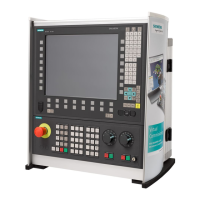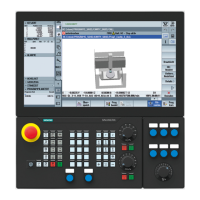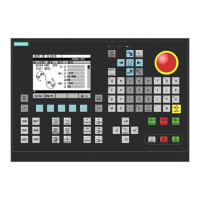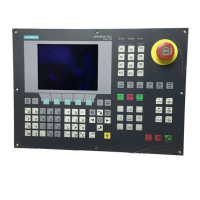Detailed Description
2.6 Block search Type 5 SERUPRO
Mode Group, Channel, Program Operation, Reset Response (K1)
Function Manual, 08/2005 Edition, 6FC5397-0BP10-0BA0
2-47
A) Start axes individually
The REPOS behavior for SERUPRO approach with several axes is selected with:
MD11470 $MN_REPOS_MODE_MASK BIT 3 == 1
The NC commences SERUPRO approach with a block that moves all positioning axes to the
programmed end and the path axis to the target block.
The user starts the individual axes by selecting the appropriate feedrate enables. The target
block motion is then executed.
B) Reposition positioning axes in the repositioning block
Positioning axes are not repositioned in the residual block but rather in the repositioning
block, and their effect is not limited to the block search via program test on SERUPRO
approach.
MD11470 $MN_REPOS_MODE_MASK
Bit 3=1 For block search via program test (SERUPRO)
Bit 4=1 For each REPOS
Note
If neither bit 3 nor bit 4 is set, "non-path axes" are repositioned in the residual block in this
phase.
Prefer or ignore REPOS
Further REPOS adaptations can be made by setting the bits in:
MD11470 $MN_REPOS_MODE_MASK
Bit 5 = 1 Modified feedrates and spindle speeds are valid immediately in the residual block and
are given priority. This behavior relates to every REPOS operation.
Bit 6 = 1 Neutral axes and positioning spindles are repositioned after SERUPRO.
Neutral axes that are not allowed to be further repositioned must receive interface
signal:
DB31, ... DBX10.0 (REPOSDELAY)
This cancels the REPOS movement.
Bit 7 = 1 The level of interface signal:
DB31, ... DBX10.0 (REPOSDELAY)
is read if REPOSA is interpreted.
Axes, which are neither geometry nor orientation axes, are then excluded by REPOS
and are not moved.
Note: REPOSDELAY is changed from edge to level evaluation.
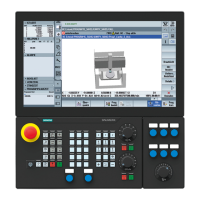
